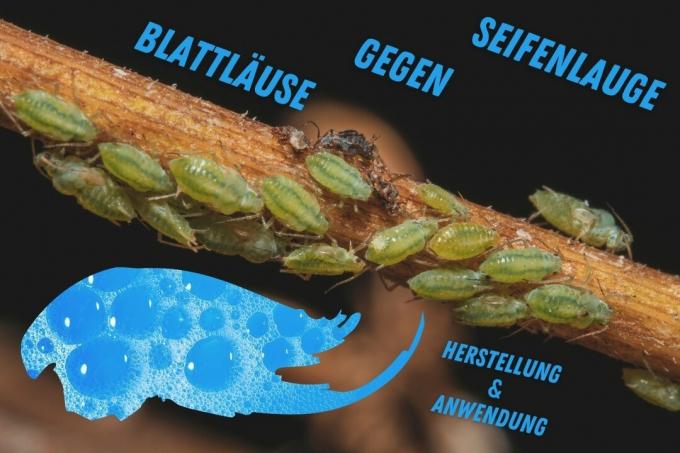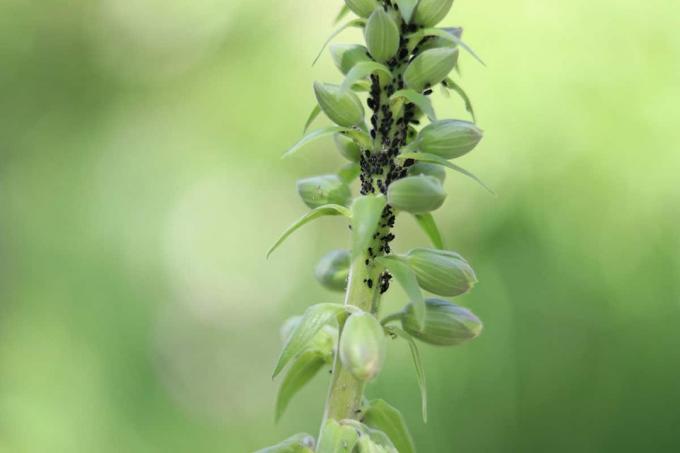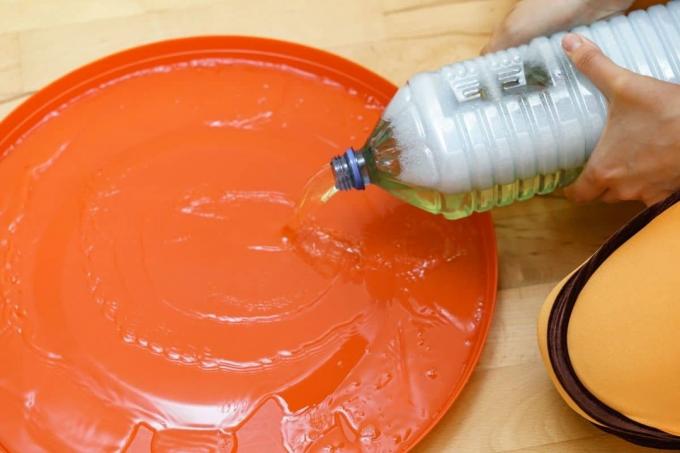
table of contents
- Ingredients required
- Manufacturing
- use
- frequently asked Questions
If aphids (Aphidoidea) suddenly multiply on the plants in the garden or in the house, this is annoying, but still no reason to despair. Because there is a good home remedy that you can quickly make yourself. This is soapy water that is ideal for combating aphids.
In a nutshell
- Aphids mostly on leaves in spring
- appear suddenly out of nowhere
- Use potash or soft soap to make the lye
- do not contain colorings, fragrances, thickeners or excess fat
- other soaps damage the environment and the treated plants due to their ingredients
Ingredients required
For the soapy water that is used to Control of aphids can be used, "normal" soaps should not be used, such as those found in shower gel, shampoo or other personal care products. It is advisable to use lubricants or potash soaps in order to prevent further damage to the affected plants:
- Main ingredient in most shaving soap products
- do not have excess fat
- no thickeners either
- are made without dyes or fragrances
- other products have additives
- for example microplastics
- harmful to the environment
- are not suitable for aphid control

Note: You can get the required lubricating or potassium soap cheaply in any well-stocked drugstore, often in liquid form.
Manufacturing
The soapy water for the control of aphids is a very effective remedy and very easy to make:
- 50 grams of lubricating or potassium soap
- one liter of warm water
- Add the soap and let it dissolve
- let cool down
- stir or shake
- in suitable for the crop

Tip: If you have bought the potash soap in one piece, it is a good idea to use a kitchen grater to dissolve it better in the water.
use
If the soapy water has been made, the affected plants are sprayed with it:
- use a pressure sprayer for trees
- to do this, fill in double or triple the amount of soapy water
- a simple spray bottle is sufficient for small plants
- Spray daily at the beginning
- until no more infestation can be seen
- Shower off plants before first use
- Trees and bushes with a garden hose
- smaller plants several times with watering can
- alternatively, use a garden hose here as well
- wash away the first aphids beforehand

Note: If the infestation is particularly large, you can extend the home remedy with spirit or alcohol and thus increase the effect even more. To do this, simply add two teaspoons of the chosen substance to the soapy water.
frequently asked Questions
You can recognize a pest infestation by aphids very quickly from the insects themselves. Because these sit on the young shoots, buds and young leaves. There are different types of aphids, which can be either black or green but yellow and reddish. In such a case, you should spray the colonies directly and specifically before you treat the entire plant as well.
As a rule, the aphids disappear after the first spray. If the colony is large, it may be sprayed several times over several days. Then observe the affected plants for several weeks, because it is possible that the pests reappear after one to two weeks and another spraying will be necessary.
If you are working on a soft soap base, you can use the soapy water solution until the aphids have completely disappeared. The plants are not damaged by these multiple applications. With indoor plants or very dry weather without rain, even with garden plants, you can briefly shower them with water after successful application.
The pests feed on the sap of the plants. To get to it, they prick the leaves and shoots with their sharp mouthparts. The subsequent sucking through the mouth not only removes the plant sap, but it often comes to the a transmission of pathogens that are carried by the aphids and thus to the infected plant pass on.
